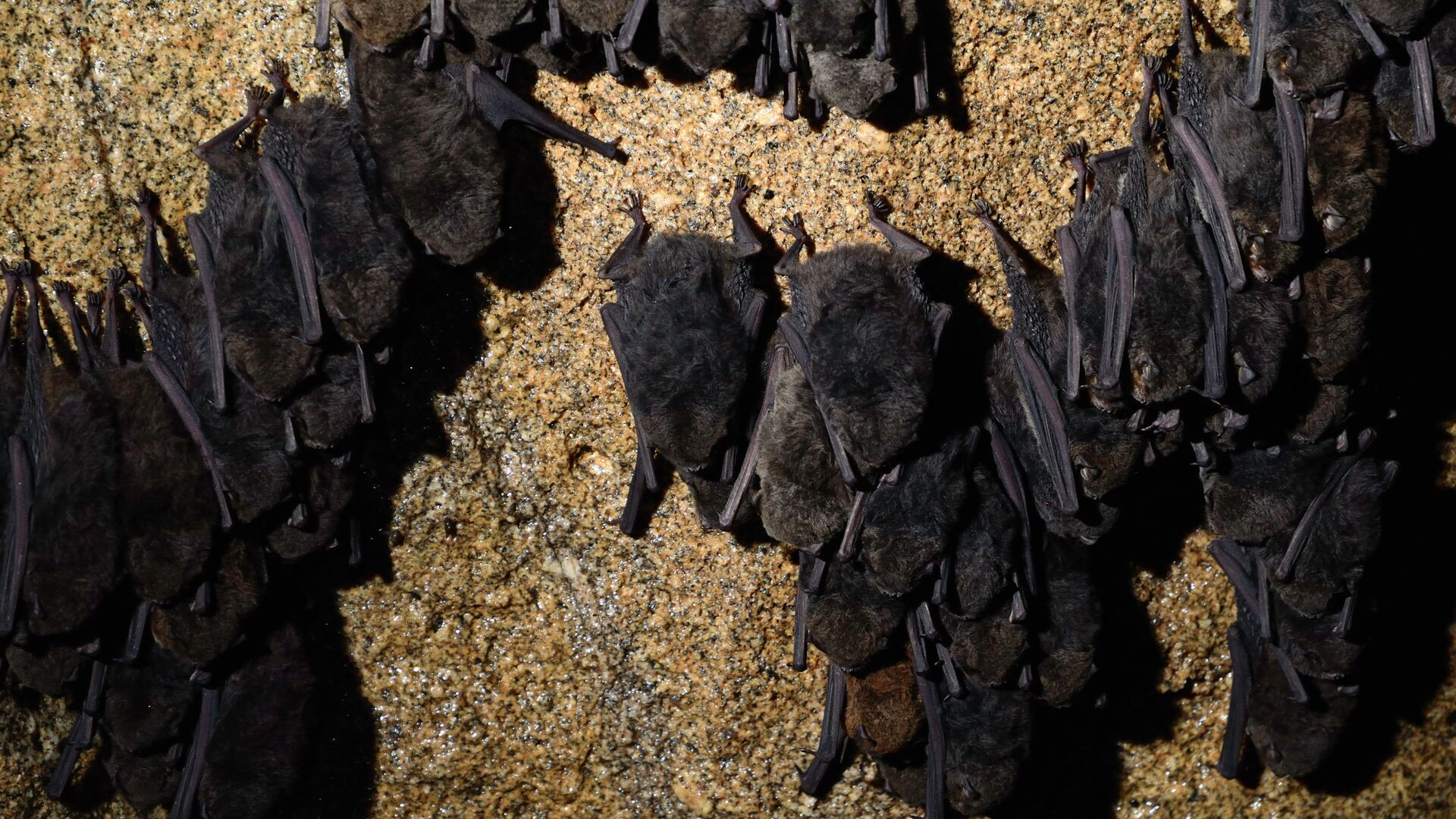https://sputnikglobe.com/20210920/discovery-of-bats-with-close-sars-cov-2-relative-add-more-evidence-to-natural-origins-of-covid-19-1089252795.html
Discovery of Bats With Close Sars-CoV-2 Relative Add More Evidence to Natural Origins of COVID-19
Discovery of Bats With Close Sars-CoV-2 Relative Add More Evidence to Natural Origins of COVID-19
Sputnik International
The researchers studied bats from four different limestone caves in Laos with coronaviruses that featured incredible similarities to Sars-CoV-2. The discovery... 20.09.2021, Sputnik International
2021-09-20T21:00+0000
2021-09-20T21:00+0000
2021-09-21T03:45+0000
laos
sars coronavirus
bats
coronavirus
covid-19
https://cdn1.img.sputnikglobe.com/img/101910/38/1019103802_0:246:4928:3018_1920x0_80_0_0_1b7d0ba67c513a2a7675cedfa1f5d003.jpg
A research team in Laos has discovered a bat with a Sars-CoV-2-like receptor-binding domain allowing ACE2-mediated entry into human cells.While the team did not find SARS-CoV-2 in any of the bats, they found coronaviruses that were small mutations away from it.The study does not completely rule out the lab leak theory, but it does add further evidence that SARS-CoV-2 originated in nature. The idea that a ‘smoking bat’ with SARS-CoV-2 will be found remains a popular idea, but scientists have always cautioned against that line of thinking.Professor Stuart Neil, head of the department of infectious diseases at King’s College London – who was not involved in the study – told The Telegraph that “I’m not confident we’ll ever find something the same, but what we are going to find is viruses with bits that are almost the same.”The discovery also highlights that another coronavirus-like pandemic lays dormant in nature. As the list of coronaviruses with similar qualities as SARS-Cov-2 grows, it furthers the need to study the virus more to be ready for the next pandemic.
https://sputnikglobe.com/20210905/us-using-lab-leak-theory-to-cast-a-shadow-on-chinas-win-over-covid-and-talks-with-kabul-prof-says-1083799587.html
laos
Sputnik International
feedback@sputniknews.com
+74956456601
MIA „Rossiya Segodnya“
2021
News
en_EN
Sputnik International
feedback@sputniknews.com
+74956456601
MIA „Rossiya Segodnya“
Sputnik International
feedback@sputniknews.com
+74956456601
MIA „Rossiya Segodnya“
laos, sars coronavirus, bats, coronavirus, covid-19
laos, sars coronavirus, bats, coronavirus, covid-19
Discovery of Bats With Close Sars-CoV-2 Relative Add More Evidence to Natural Origins of COVID-19
21:00 GMT 20.09.2021 (Updated: 03:45 GMT 21.09.2021) The researchers studied bats from four different limestone caves in Laos with coronaviruses that featured incredible similarities to Sars-CoV-2. The discovery is a massive step in proving that COVID-19 originated in nature and not in a lab.
A research team in Laos
has discovered a bat with a Sars-CoV-2-like receptor-binding domain allowing ACE2-mediated entry into human cells.
While the team did not find SARS-CoV-2 in any of the bats, they found coronaviruses that were small mutations away from it.
“Sequences very close to those of the early strains of SARS-CoV-2 responsible for the pandemic exist in nature, and are found in several Rhinolophus bat species,” the authors wrote.
The study does not completely rule out the lab leak theory, but it does add further evidence that SARS-CoV-2 originated in nature. The idea that a ‘smoking bat’ with SARS-CoV-2 will be found remains a popular idea, but scientists have always cautioned against that line of thinking.

5 September 2021, 09:58 GMT
Professor Stuart Neil, head of the department of infectious diseases at King’s College London – who was not involved in the study – told The Telegraph that “I’m not confident we’ll ever find something the same, but what we are going to find is viruses with bits that are almost the same.”
“It’s an incredibly complex ecosystem and whether we luck out and find the right one, or whether just in bits, will be an open question,” he added.
The discovery also highlights that another coronavirus-like pandemic lays dormant in nature. As the list of coronaviruses with similar qualities as SARS-Cov-2 grows, it furthers the need to study the virus more to be ready for the next pandemic.


